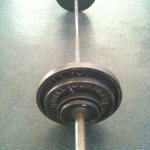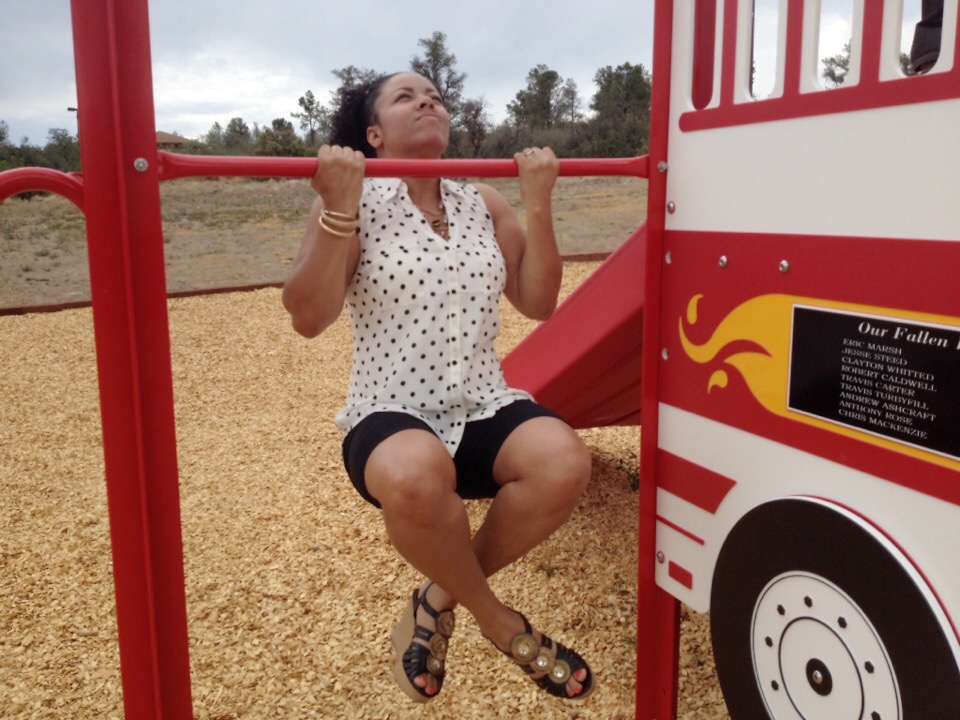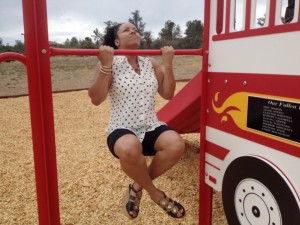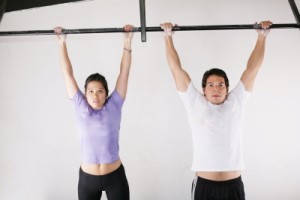 What lift/exercise is the ultimate test of strength?
What lift/exercise is the ultimate test of strength?
Depending on who you ask, you’ll likely hear different answers to the question. Most trainers (myself included) will agree on the basic beasty moves as gold standards of testing strength: bench, overhead press, barbell row, squat and deadlift. But when I see someone (man OR woman) squatting, benching, rowing or deadlifting massive amounts of weight, then flailing like a fish out of water trying to pull-up their own body weight, it makes me wonder if the pull-up is the ultimate strength test exercise. Not only do pull-ups require well-developed back strength, but they also require grip, forearm and core strength, too.
My clients know that I’m a stickler about tackling pull-ups, no matter how weak they feel they may be in their upper body. The guys may feel like it has nothing to do with the overall chest/abs/bicep physique they covet, while ladies tend to be afraid of getting a “wide” back (v-taper) for fear of looking too “manly.” Instead of bicep curling into oblivion, many men would be fairly impressed by the bicep development they would get from merely tossing a few sets of chin-ups into their arm routine. Ladies would do well to know that it’s VERY hard to develop a v-taper without properly periodized nutrition and training for that precise purpose. Not to mention that developing one would actually give more women (especially pear shapes), a MORE feminine, hourglass shape. Whatever the case for not wanting to do pull-ups, the benefits of developing this skill go far beyond the physique changes.
Most women are inherently weaker in the upper body when compared to the lower, and in the back side of their body when compared to the front. We ladies tend to spend most of our lives in anterior or “forward” motion: we push strollers and shopping carts, nurture children in our wombs, hold babies, pick our toddlers up and down, type, text, have boobs, etc. Essentially, we are always pushing, holding, handling weighted objects, or attending to general business on the front side of our bodies.
The repetitive motion of these movements causes the muscles at the front part of our bodies (pecs/anterior shoulders) to tighten (shoulder to shoulder across the boobs), and the muscles across the back (shoulder to shoulder across the upper back) to become lax from under-use. Going into the gym and regularly maxing out on your bench, with little attention to the back side of your body, can horribly exasperate the problem. This leads not only to increased shoulder pain, but also to a forward rounded shoulder (the dreaded “hunchback” look) as we age. Exercises such as deadlift, row, and yes – pull-ups, that challenge your back from all angles is essential to a well rounded routine and an upright body that screams confidence!.
Pull-ups are NOT easy!
Back in the day (can’t believe I’m old enough to say that! LOL) pull-ups were part of our education. They weren’t necessarily mandatory, but we were tested on them at least once/year and it was generally accepted that it was something that most boys should be able to do with ease. Girls were often graded by how long they could “hang” on the bar. With the more relaxed Physical Education requirements in recent years, it’s not uncommon to see boys become men who can’t even do one pull-up (my husband cringes at the sight of my nephews’ attempts at pull ups). If men are struggling with pull-ups, it’s no wonder us women tend to be, too. Simply jumping up to a pull-up bar and hanging on for dear life can seem more taxing than it was in our youth, but learning to do body weight pull-ups isn’t impossible!
But it DOES take patience and persistence, which our generation seems to have lost…
The amount of time it takes to learn to do a pull-up will vary – depending on factors such as current fitness level, consistency, body weight, etc. Obviously, the more you weigh, the more you have to pull-up, and vice versa. But don’t get tempted to use your weight as an excuse (“I can’t do pull ups, I’m too heavy!” …”when I lose weight I’ll learn” or “but they’re so light, it’s easy for them!!”), start practicing NOW. Pulling your body weight is pulling your body weight… per capita, it’s tough for everyone. Take your time, be consistent, and build up your strength. You CAN eventually do a full pull-up.
Then 2…4…10 and so on!
Ready to dive in?
Let’s talk equipment.
If you have a membership at your local gym, they should have you covered (in which case, feel free to scan/speed read through this next bit).
If pullups aren’t currently a part of your routine, you may not have an actual pull-up bar, or even access to one. I highly recommend ultimately investing in a pullup bar like the iron gym or similar apparatus (they’re fairly cheap), if you plan on working out at home exclusively. I’m a home exerciser myself, and my bar is worth it’s weight in gold!
But until then, enjoy homemade versions, and the great outdoors… always keep your eye out for pullup “bars” hidden in plain sight to work on perfecting your craft ;)
Some places you can practice your pull up skillz:
- monkey bars
- stairs with no riser (like in outdoor apartment buildings)
- under chairs/tables
Beginner Pull up Prep
The biggest mistake that most newbies make with pull ups is simply walking up to the bar, attempting a pull up, and walking away discouraged. No one can/should expect to dive right in to doing pull ups without first having a base strength/endurance levels. If you currently can’t even hang on the bar for an extended period of time, do NOT attempt pull ups just yet.
Here are a few exercises that you can start doing now to build up the lat strength to be able to do a pullup:
- Dips (best if they are done on parallel bars or positioned between two chairs in this manner, to fully involve the lats)
- Elbow Presses (on a wall, or on the floor with elbows in at your side for more challenge)
- Vertical pulls (use any bar or wall alternating hands at different angles)
Once you have sufficient strength to perform those exercises, you should be able to move into a basic pullup progression.
Whatever your starting point, just start. Take on the challenge! If you’re completely lost for where to start, there are a few steps you can take and exercises you can add into your weightlifting routine to get one step closer to being a pull-up princess. In the next part of this series, we’ll go over a few tips on how to bang out that first pull-up.
Until then…
~Kiki :)
Should you just do cardio to lose weight? How heavy is heavy lifting? Do "strength" DVDs count? What if you don't want to lift? Sign up now for in-depth info on strength training and fat loss. You'll also receive special vids and free workout plans to help you get the most from your time in the gym. No worries, we hate spam too!
Photo cred: David Castillo Dominici





One day…*sigh*
You will, April. It definitely takes time, but your eating has been more consistent (& plentiful!) so you should look to see that kinda strength really soon!